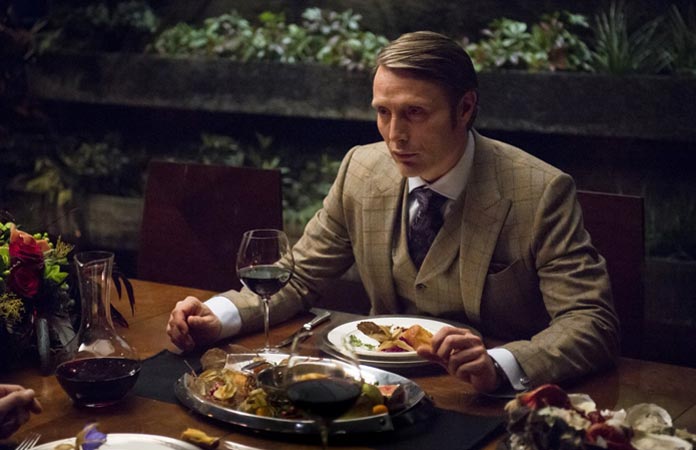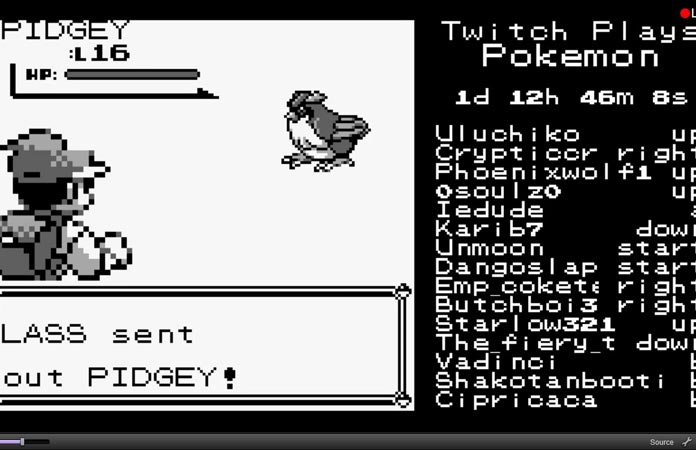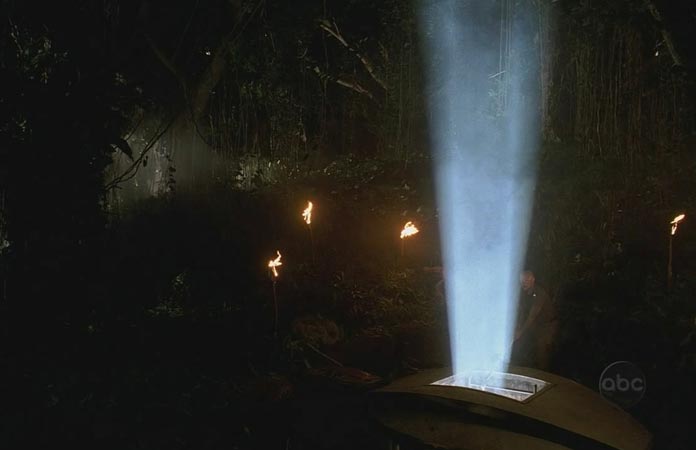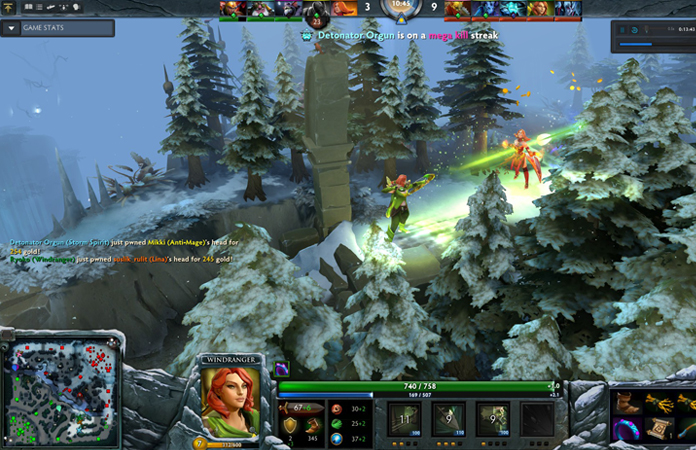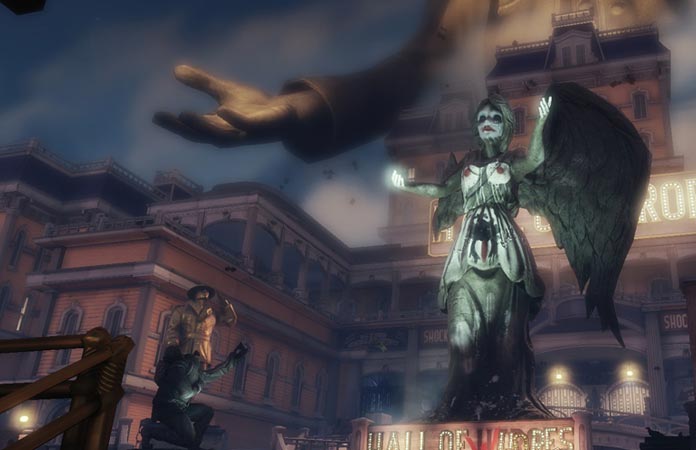Best Of 2014: Peter Counter
Published on January 9th, 2015 in: Best Of Lists, Books, Comedy, Gaming, Horror, Movies, TV |Climate change. Isis. The police. A growing feeling of insignificance. These are the monsters we live with every day of our increasingly fragile lives, and in 2014 it affected our art in a very pervasive way. If it can be said that pop culture is the dream of our society, an expression of our collective unconscious scribbled onto our paper and video discs and maybe—I don’t know—Netflix’s data centers, then it can also be said that we’re starting to have an increasingly monstrous societal nightmare.
Now, that cultural nightmare, while increasingly scary, is also becoming more beautiful and deftly created every year. With the emergence of horror genre television, the return of weird fiction, and just the general exploration of the more unthinkable aspects of life in all entertainment media, it is becoming clear that those of us who live life connected to the cultural sphere have a very close relationship to the things that would otherwise keep us up at night. It’s also a great time to be a fan of horror.
Here are my picks for most notable monsters that haunted our cultural dreams in 2014.
Penny Dreadful
Notable Monsters: Vampires, a werewolf, Dr. Frankenstein, Frankenstein’s monster, Dorian Grey, plague, heartbreak, the entity inside Vanessa Ives, probably a mummy
Primary Fear: We fear the monster inside of us.
Obligatory Best Of Classification: Most Exciting New TV Series
Penny Dreadful, which is my bid for most exciting new TV series of the year, is a pulpy gothic literature mashup in which the protagonists are plagued by the monsters within themselves. It’s an internal conflict that for some characters is explicit and obvious (a woman possessed by a demon, a werewolf), while for others it is poetic (Dorian Gray, Victor Frankenstein), and for a few it’s particularly nuanced (a cholera patient, a father haunted by the death of his son and the abduction of his daughter).
In Penny Dreadful the primary struggle involves a group of allies, each suppressing an inner monster, who wage war on the dark forces invading its fictional Victorian London. The most heroic action that can be taken in the show’s world is to acknowledge that you are a monster and then choose to fight monstrosity. As a viewer, this is an empowering and freeing message.
2014 was filled with myriad reasons to stand up and fight for what’s right, but for certain white, straight, and male demographics, the first step in most of those struggles was understanding one’s role in perpetuating the problem. Penny Dreadful acts as a pulp parable in this regard, showing us heroes that are well intentioned yet plagued by the fact that they contain within them some of the same evil that they are fighting.
What We Do In The Shadows
Notable Monsters: Petyr, Nick, Vladislav, Deacon, Viago (vampire roommates); Anton and his pack of werewolves
Primary Fear: It’s tough being a monster these days.
Obligatory Best Of Classification: Best Movie
The New Zealand vampire mockumentary What We Do in the Shadows, despite having very few human characters, is a variation on the same theme as Penny Dreadful, albeit more optimistic (it is a comedy). Each monster character, from the vampire roommates to the werewolf pack lead by Anton (Rhys Darby’s micromanaging alpha male), is a piece of monster history trying to live and love in modern day Wellington.
I’m including What We Do In The Shadows here not because of its ability to illustrate a major fear, but because of what it says about all the other dark and despairing feelings on this list (also it was my favorite movie of 2014). Shadows avoids taking any sort of moral stance on monsters, electing instead to say, “OK, we get it, we’re monsters. But we still have to pay rent, right?”
The Southern Reach Trilogy
Notable Monsters: Area X
Primary Fear: A world that is indifferent to us.
Obligatory Best Of Classification: Best Novel(s)
Jeff VanderMeer’s The Southern Reach trilogy of novels were all released this year, causing many readers and critics to declare the return of H.P. Lovecraft-style weird fiction. The books are an excellent experiment in narrative framing, each one changing format to keep the right things hidden to produce a premium sense of the uncanny and sublime. That said, the most remarkable aspect of VanderMeer’s trilogy is its central monster: Area X.
The Southern Reach books deal with an enemy that is difficult to comprehend. Cordoned off somewhere on the East Coast of the United States (I think), Area X is probably best described as a topographical anomaly which is creating a pristine wilderness out of our human world. It just does what it does, and if you are unlucky enough to bear the curiosity that might bring you close to Area X, it’ll do what it does to you, too. Area X would still create its perfect geography without humans, and it probably will continue to once it assimilates us all.
True to weird genre form, all three books do an excellent job of painting a picture of the unknowable. There are no answers in Area X, because answers are human. The Southern Reach trilogy uses horror and Jeff VanderMeer’s confidence to defy a reader’s lust for answers. Like a hurricane, flood, melting ice cap, or rogue asteroid, the terror of Area X is that it doesn’t require our definition to be hostile. The conflict is on a planetary scale, and we’re too small to matter. Area X will just change us and that’s something we have to accept.
Silent Hills
Notable Monsters: Lisa (ghost); talking foetus in a sink; yourself
Primary Fear: There is no escape from this nightmare we’ve created for ourselves.
Obligatory Best Of Classification: Best Video Game
The playable teaser for the upcoming video game Silent Hills, known officially as P.T., was the best video game I played all year. It’s legitimately unsettling like no game has felt, potentially ever; it tells a heartbreaking story completely through simple gameplay; and it subverts the survival horror genre in a very upsetting way. That is to say, in P.T. you have no choice but to survive.
P.T. will not let you die. In previous Silent Hill entries, I always had a sense that the characters would be better off dead than be made to face their custom-tailored punishment. Character death always felt like a sort of emotional escape hatch, even if it was only ever just a frustrating illusion (obviously death is not an option in a narrative that has your character come to the end of the game).
In P.T. there is no “game over” screen. If you are murdered by the abused-to-death ghost of your wife Lisa, you wake up trapped in the same hall. All the doors are locked, even the morbid metaphorical doors, so the only choice (other than standing still) is to keep descending those spiral hallways haunted by the sins of your past.
Review With Forrest MacNeil
Notable Monsters: @thereallisaching
Primary Fear: All meaning is created. Nothing matters.
Obligatory Best Of Classification: Best New Comedy
Review with Forrest MacNeil is the funniest new show of 2014 and a great example of how elements of horror are even invading half-hour comedies. The titular character has taken on the ambitious task of reviewing life itself on an item-by-item basis. After reviewing some of the more difficult parts of life—cocaine addiction, eating 15 pancakes, divorce, eating 30 pancakes—Forrest is confronted with the horror of reviewing the unknown.
A Twitter user named @TheRealLisaChing submitted a request that Forrest review bubble baths, but thanks to a computer glitch the intrepid critic is sent on an odyssey to the end of human meaning.
Forrest is driven temporarily insane on his quest to decipher the meaning of “There All Is Aching” (a broken up version of Lisa’s Twitter handle submitted by the non-existent @bubblebaths). It’s not long before Forrest is being treated to shock therapy, ingesting boatloads of prescription medication, and plotting an asylum escape plan with fellow inmate Emo Philips.
The positive way to look at There All Is Aching is how Forrest reviews it, before the reveal that he should have been soaking in warm, bubbly water instead of being electrically and chemically lobotomized: There All is Aching is a symbol of the struggle of our need to find meaning in randomness. When the glitch is revealed to him, though, it’s clear that no matter what we tell ourselves after experiencing the horrible chaos of the universe and surviving, it can only ever add up to, at most, a three-star experience.
Hannibal
Notable Monsters: Hannibal Lecter
Primary Fear: We are weak and don’t know what to do.
Obligatory Best Of Classification: Best. Just The Best.
So, if the world is terrible randomness and absurdly horrific, what are we to do? If you’re Abigail Hobbs in Bryan Fuller’s Hannibal, you do what Dr. Lecter tells you.
The second season of Hannibal is the best piece of 2014’s media I consumed all year. It’s beautiful to behold, intricately written, and does perfect justice to the modern king of monsters, Hannibal Lecter. Beauty and craftsmanship aside, the show’s second season strikes such a heartbreaking chord with its bloody climax that you feel terrifyingly weak as a human.
The entire series is a nightmare love story, and Hannibal Lecter, though not necessarily the main character, is the dark sun around which all the action orbits. He is both the prime mover and the perceived object of every main character. Whether they want revenge, like Will Graham; justice like Jack Crawford; fulfillment like Alana Bloom; or some kind of perverse vindication like Mason Verger, they all need Hannibal to tell them how to get it as the high-functioning psychopath dangles their greatest desire just out of reach.
Lecter is an anti-god, not motivated by the sadistic, but out of active curiosity and pride. Hannibal is an effective representation of our need for some sort of higher being and the fear that the one we put our faith in might be more interested in our mutilation, humiliation, and wine pairing than our actual well being.
We are all living scary lives, and the monsters we love to watch help us know our fears. Hannibal Lecter is an example of how those fears can be at once beautiful and paralyzing.
Peter Counter is a freelance pop culture and technology writer. He writes about TV and video games for Dork Shelf.
Best Of 2014: Martin Hollis
Published on December 12th, 2014 in: Best Of Lists, Gaming |Every year I post my top five games of the year onto Twitter or Facebook, with little in the way of explanation. This year, I need to change that. The year itself has been a strange one: the titles I expected to be writing about such as Arkham Knight, Evolve, and next year’s obvious game of the year, Captain Toad: Treasure Tracker, all faced delays. It was a pattern across the industry, with more time needed for polish, and the titles that did manage to sneak out in time for the Christmas season have suffered major issues with performance, online play, or glitches. In fact, only Nintendo have seemed to have avoided this fate, although CEO Satoru Iwata’s mantra of “more time needed: please understand,” was one even the house of Mario couldn’t avoid, and several titles promised at an exciting E3 linger in the ether of 2015.
After You’ve Gone: Thoughts On Burial At Sea
Published on April 11th, 2014 in: Current Faves, Gaming, Movies, Reviews, Science Fiction |By Paul Casey
Part One
I love Lost. I love Prometheus. I love Bioshock. Suspension of disbelief is a crutch for people who have a failure of imagination. Hammering something down and making it more comprehensible is not an inherent positive. Presenting a story that provokes confusion and forces the brain to engage in a creative way is not a failure of talent or of planning. It is an artistically rich approach that many actively seek out in opposition to what they are told are the true “reality” based goals.
Best Games Of 2013: Luke Shaw
Published on December 30th, 2013 in: Best Of Lists, Gaming |I should start by going out of my way to elaborate that this is not a best games of the year list, or any other such nonsense. I don’t own every console, I barely played a quarter of the year’s releases, and I spent a disproportionate amount of the year on older games like S.T.A.L.K.E.R Shadow of Chernobyl.
Instead, I’m just going to write about things that I wasted my time playing this year, and why I am not sad I wasted my time doing so. The only real theme to this list is impact: anything that engrossed me for a sufficient space of time, or something that resonated deeply, or long after I finished it. I have included the three biggest critical releases of the year, not just because I enjoyed them but because they did a lot of things wrong. Regardless they deserve to be talked about and weighed into any discussion like this. I regret not being able to play tantalizing releases such as Gone Home and Papers, Please but I am no journalist and my time and money are limited. There is an overall winner, but it is only taking that spot due to the sheer lunacy of the hours invested.
Best Of 2013: Paul Casey
Published on December 18th, 2013 in: Best Of Lists, Gaming, Music, TV |2013 was a good year for my interests. Some of the greatest video games I have experienced all came in a bunch. R&B continued its resurgence with both new and legendary musicians, making this year one of the greatest in nearly a decade for human music. Rap has also reached a more interesting place than it has been in a long time with much of the dull-minded aversion to being smooth and beautiful wiped away. Now if you want to hit a nice melody on the chorus you can do it without the fear that you will be removed from the big-cock-I’m-in-a-street gang-and-will-literally-murder-you-and-your-family club. Even when it was aggressive or violent, this year it was from the Miike Takashi School of Creative Perversion.
On the television too, I had a wonderful time with the most original American show in the last decade ending its run on top. Yes, Eastbound & Down (probably) ended Kenny Power’s story as fearlessly as it began. This was not a big movie year for me and while I am sure there are a bunch that I will love when I get around to seeing them—Blue Jasmine, The Counsellor—nothing I have seen this year warrants a recommendation.
FanExpo Canada 2013: 100,000 Fans Can’t Be Wrong
Published on August 29th, 2013 in: Art, Canadian Content, Cartoons, Comics, Concert Reviews, Conventions/Expos, Gaming, Horror, Movies, Music, Science Fiction, Toys and Collectibles, TV, Underground/Cult |Another year of FanExpo Canada has come and gone. As usual, the four-day event was jam-packed with people and panels, photo ops and paraphernalia. With so many things happening and so many attendees, there are bound to be a multiplicity of experiences. Here are mine.
Day One: Thursday, August 22
The doors opened at 2:00 p.m. and as usual, there was already a line-up. I don’t like to brag, but I enjoy being able to go through the Media entrance and not wait in the lines outside. Although, never fear, non-media folks: I still have to wait in a line to get onto the exhibition floor like the rest of you. (I do think it would be nice if media got to go in about an hour before the show opens, just to prepare for photos and video shoots.)
This year, due to the addition of the Sports segment and the expected increase in attendance, FanExpo took up multiple floors in both the South and North buildings. This meant a bit more walking across the bridge between buildings, but it also made for less cramped conditions (at least on Thursday, Friday, and Sunday; I didn’t attend Saturday).
FanExpo Canada 2013: Top Ten Picks
Published on August 21st, 2013 in: Art, Canadian Content, Cartoons, Conventions/Expos, Feminism, Gaming, Listicles, Movies, Music, Upcoming Events |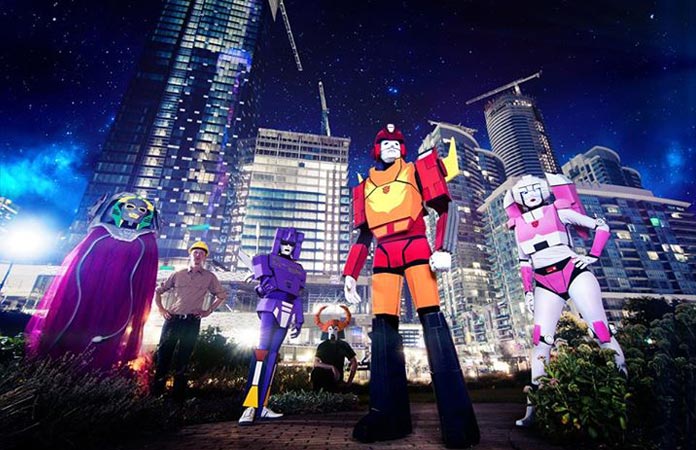
The Cybertronic Spree
Photo © Paul Hillier Photography
FanExpo Canada 2013 runs from Thursday, August 22 through Sunday, August 25 this year. The annual four-day event is crammed with stuff to do and see across multiple fandoms, like anime, comics, gaming, horror, science fiction, and now, sports. It can be a little overwhelming to plan out your days.
My favorite part of FanExpo is always Rue Morgue’s Festival of Fear, but with so much to choose from, there’s always a bit of crossover. I’ve come up with my Top Ten Picks of this year’s FanExpo, which I think will satisfy all of your fandom-related urges.
Random Rant: No, Being Average Isn’t Worse Than Being Bad
Published on July 31st, 2013 in: Critics/Criticism, Gaming, Music, Over the Gadfly's Nest |By Paul Casey
If you have been reading music publications for any length of time, you will be familiar with the following:
“Much like the worst direction you can go in is no direction, so is inoffensiveness worse than taking a stand, and thus the boring album is in a way worse than even a terrible album. An album that is full-on awful will always get minimal scores, but an album that is accomplished but boring is going to attract the dreaded three-star review—so often the calling card of the most inessential music of all (if your album is best described as “pleasant” then you’re in serious trouble). A one-star album can’t be boring, because even if the music is godawful, it’s WHY it’s awful that is itself entertaining—a one-star review is inherently entertainment, which is why you’ll always read one when you’re skimming the reviews column. But who the hell wants to read the three-star reviews, particularly as they’re all identical (“IT’S NOT TERRIBLE, BUT IT’S LACKING. IT FALLS SHORT, BUT IS A STEP IN THE RIGHT DIRECTION”). And boring as fuck.
The opposite of enjoyment is not disgust; it’s tedium, because in a life so cruelly short, there’s nothing worse than being forgettable. The most disgusting pizza I’ve ever had was the one that accidentally had dish soap in it (SECRET FAMILY RECIPE), yet of all the ones I’ve eaten, it alone has survived the years as an amusing anecdote. It’s the middling three-star stuff you won’t remember. The albums from artists you respect that you’ve had forever but played once (REM are like your parents—you know they’re good, but you never listen to them). A reworking of ratings systems might help, but if we’ve gone this far without rating entertainment based on how entertaining it is, then why start now? The accepted method of rating albums isn’t terrible, of course, it’s just lacking. It falls short, but it’s a step in the right direction. I’d give it . . . 3 stars out of 5, let’s say.”
—”The 5 Worst Kinds of Album Every Music Fan Has Bought,” Cracked
Game Review: Monaco: What’s Yours Is Mine
Published on May 7th, 2013 in: Current Faves, Game Reviews, Gaming |By Luke Shaw
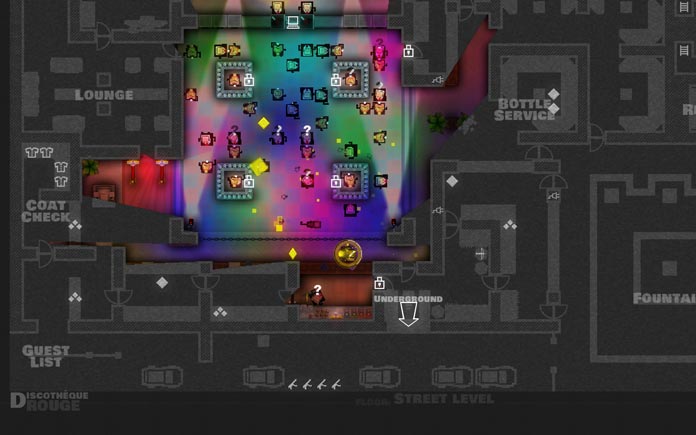
There are few things as satisfying as planning and executing something that can afterwards be relished as “faultless” in its delivery. Pre-planning a bold and elegant display of awareness, intuition, and raw smarts rewards the schemers ten-fold, when all the disparate elements converge over the course of a few seconds. Trip wires are short-circuited, guards are subdued, guests are pickpocketed, and a safe full of jewels is opened by agile fingers. Monaco: What’s Yours Is Mine has enshrined this principle in its advertising:
“Get in, get out, get rich.”
Game Review: Bioshock Infinite
Published on April 1st, 2013 in: Current Faves, Game Reviews, Gaming, Reviews, Science Fiction |By Paul Casey
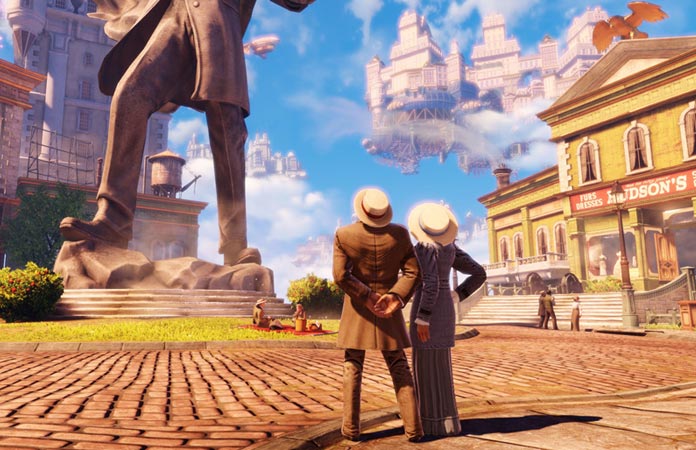
When Science Fiction reaches a large, mainstream audience it frequently stumbles. There are those out there, we are reminded until we expel body liquid, who are not particularly enamored with the idea of bizarre imaginings or Dystopian re-purposing of real events. These unreal things must be shrouded or hidden or compromised to meet the exacting standards of a public that drives Michael Bay pictures to earn hundreds of millions of dollars. They simply will not accept things that cannot happen, unless they get something tangible in return. “Gimme that walking arse shot or allusions to ear-fucking Megan Fox, whatever; just make sure that those grinning mugs don’t get their sense of reality altered! We’re running a business here. Don’t go abstract. Don’t make bold statements.”
When Irrational Games did Bioshock, it seemed to me, and some other folks, that here was a legitimate, big-budget step towards a new philosophy in video games. One that did not insist that the bare mechanics were the only thing worth evaluating. It made a powerful argument for world building, art direction, and quality writing and acting being able to do more than give finely tuned aiming and shooting a pretty wrapping. In Bioshock these things impacted the player’s experience to such a degree that evaluating one without the other seems foolish. That game had its issues, but its issues were a result of its ambition.
Bioshock Infinite is what happens when that ambition finds larger public, creative, and financial support. There is a storytelling depth here that very few games have approached. More importantly, it is a braver and more challenging piece of work than any of the other narrative successes in recent years. Its politics are not easily identifiable—though I am sure there are some lining up to suggest it fails because it contradicts some ideology or other—and its examination of human flaws leads the player to bad, honest places. If there is any clear message to be taken, it is probably that people who seek power are invariably the people who should not possess it, regardless of how righteous they appear.
